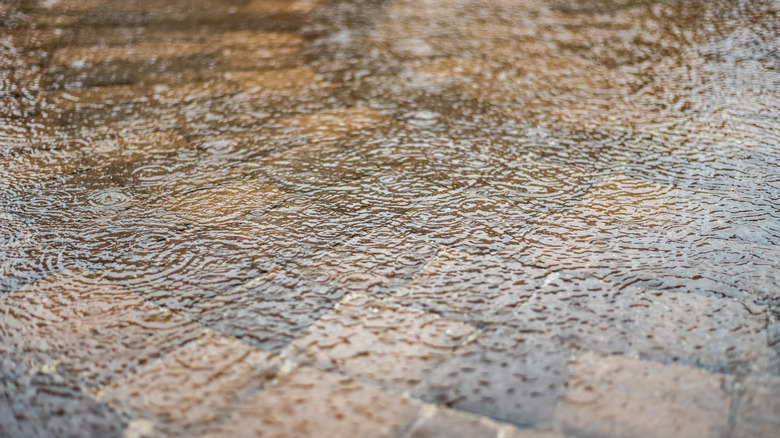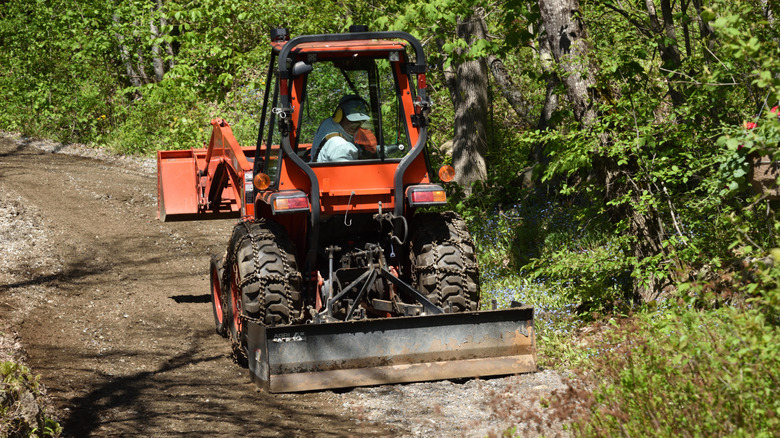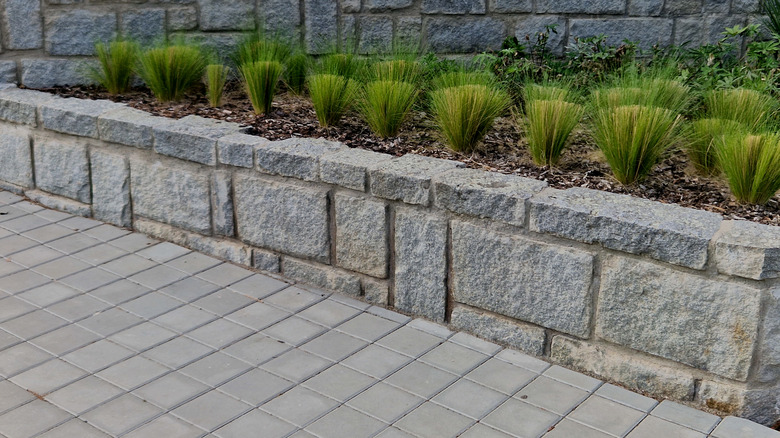Simple Ways To Add Drainage Under Your Pavers
Are you considering installing a paver driveway or patio? Or, does an existing paved area suffer from excess rainwater accumulation? In either case, you need to ensure adequate drainage under the pavers. Without a strategy for channeling water away, you endanger structures and plants adjacent to the paved space — pooling water can damage a home concrete foundation and cause the plants' roots to rot. Not to mention that a partially flooded outdoor space is difficult to enjoy.
Fortunately, there are a number of methods for adding drainage under patio or driveway pavers. If you haven't installed the stones yet, the best thing to do is to slope the area away from any structures or objects you'd prefer to keep dry. Needless to say, you'll slope it away from the house. However, you should also make sure that water runoff doesn't affect accessory structures, like storage sheds, or saturate the garden soil. Likewise, it's important to give the pavers a base that's capable of absorbing water instead of creating puddles.
Now, if you want existing pavers to drain more effectively, retaining walls and French drains are two viable solutions. A strategically positioned retaining wall can prevent water from running down a slope and flooding the pavers. Meanwhile, a French drain can absorb large volumes of rainwater and likewise keep it from forming puddles in the paved area.
Easy ways to ensure drainage during paver installation
When installing pavers, there are a few steps you can take to make sure water drains from under your paver patio or driveway. Most crucially, you must slope the paved surface away from any nearby structures. Proper grading is an important tool in your fight against pooling water, since it lets you take advantage of gravity to channel rainwater off your property. As a rule of thumb, slope the surface at a rate of ¼-inch vertically for every linear foot on the horizontal plane.
If your yard suffers from drainage issues, you'll need to install a special type of base beneath the pavers. Typically, paver bases consist of highly compacted gravel and sand — the compaction provides stability to the surface above the base. That said, compaction also makes the base layer less permeable, which is not what you want if you're worried about drainage. Open-graded bases are the best solution. These consist of ¼-inch gravel or crushed stone, aggregates that are large enough to let rainwater make its way down easily beneath the pavers. The base still needs to be well-built and sturdy — a weak foundation will allow some of the pavers to settle, which will in turn invite rainwater to pool there.
Another strategy to try is to create a dry well next to the area where water typically pools. A dry well is a rudimentary drainage mechanism that comprises a ditch lined with gravel. This setup draws in excess rainwater and lets it drain into the ground, preventing your yard from overflowing and keeping your pavers dry.
How to improve drainage with existing pavers
If poor drainage is plaguing your existing paved area, you don't have to rip the pavers out to regrade the surface or install a new, more permeable base. Instead, consider equipping the outdoor space with a drainage system. You have several different water control mechanisms to consider.
One is to protect your landscape with a concrete retaining wall and block water from flowing onto the paved area. Adding a retaining wall to your yard also brings about aesthetic benefits and helps control erosion. Relatively high construction costs is one of the drawbacks of this solution — a retaining wall will set you back over $6,000, on average. Also, depending on the wall's height and your jurisdiction, you may have to get a building permit and planning approval from local officials.
If the costs and hassle associated with retaining wall construction don't sound like your cup of tea, consider building a French drain at the edge of the patio or driveway. Installing a French drain costs less than building a retaining wall, with an average price tag of $5,000 or so. This type of drain is made up of a gravel-filled trench with a perforated pipe at the bottom. The gravel in the trench collects flood water, and the pipe channels it away from the property. One benefit of the French drain system is that the surrounding soil — for example, your nearby garden — is able to draw as much water as it needs from the trench, while the excess ends up escaping through the perforated pipe.


